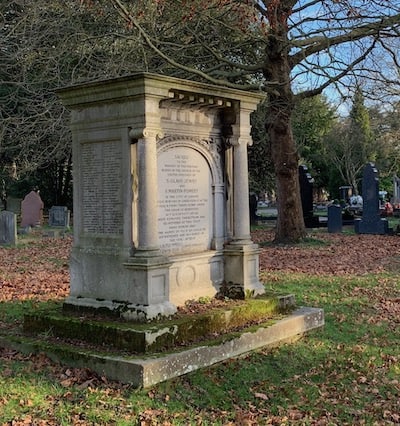By the 1850s London was expanding rapidly. It was a global capital controlling and Empire on which famously the Sun never said. As a result last numbers of Victorian terraced houses in the suburbs were being built. You can still see them today as they form a ring of brick buildings 10 miles wide that surround the Georgian stone core of London. This meant that land in the city of London was at a premium and needed for commercial purposes to run the Empire. The residential population moved to the newly built suburbs. As a result the congregations of the London city churches declined rapidly – meaning there was a surplus of churches.
This gave rise to the Union of Benefices Act of 1860. It allowed parishes to be combined and churches to be demolished. In all, 23 churches were demolished between 1868 and 1907. The parishes were combined with other remaining churches and, in many cases, the graveyards were cleared of the human remains and the sites redeveloped for commercial buildings.
But what to do with these exhumed remains? The solution came in the building of cemeteries on the outskirts of London. One of these was the City of London Cemetery in Manor Park. In 1853, 200 acres of the Manor of Aldersbrook which was owned by the 2nd Duke of Wellington were purchased by the city of London commissioners and a new cemetery was built 7 miles from the City of London. It has been in continuous use ever since.

See below for photographs of the different memorials in this Cemetery


























